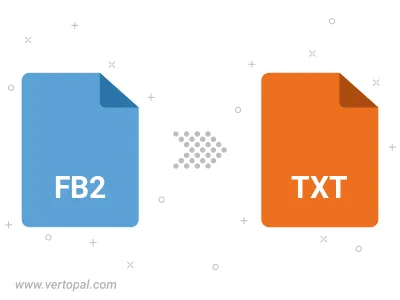Convert FB2 to TXT COMMONMARK
Convert FB2 ebook documents to TXT COMMONMARK format, edit and optimize documents online and free.

The FB2 file extension stands for FictionBook 2.0, a popular XML-based eBook format. Initially developed in Russia for easy parsing and conversion across different eBook readers, it preserves metadata and structure effectively. FB2 is mainly used for fictional literature, allowing detailed descriptions of text formatting, titles, and subtitles, which enhances the user reading experience. Its open-standard nature ensures broad compatibility and ease of modification, making it a preferred choice in digital publishing.
The TXT file extension is associated with CommonMark Markdown Language, a simplified markup language designed for easy readability and writability. Markdown is widely used in documentation, blogging, and formatting readme files in software development. Introduced in 2014, CommonMark aims to standardize Markdown's diverse implementations. Its clarity and simplicity make it a preferred choice for developers and technical writers seeking to maintain clean, structured documents.
Select a FB2 ebook document from your computer, or drag & drop it on the page.
For advanced customized conversion, use FB2 to TXT COMMONMARK tools and click Convert.
Let the file convert, then you can download your TXT COMMONMARK file right afterward.

To change FB2 format to TXT COMMONMARK, upload your FB2 file to proceed to the preview page. Use any available tools if you want to edit and manipulate your FB2 file. Click on the convert button and wait for the convert to complete. Download the converted TXT COMMONMARK file afterward.
Follow steps below if you have installed Vertopal CLI on your macOS system.
cd to FB2 file location or include path to your input file.Follow steps below if you have installed Vertopal CLI on your Windows system.
cd to FB2 file location or include path to your input file.Follow steps below if you have installed Vertopal CLI on your Linux system.
cd to FB2 file location or include path to your input file.